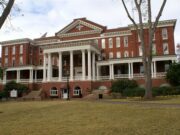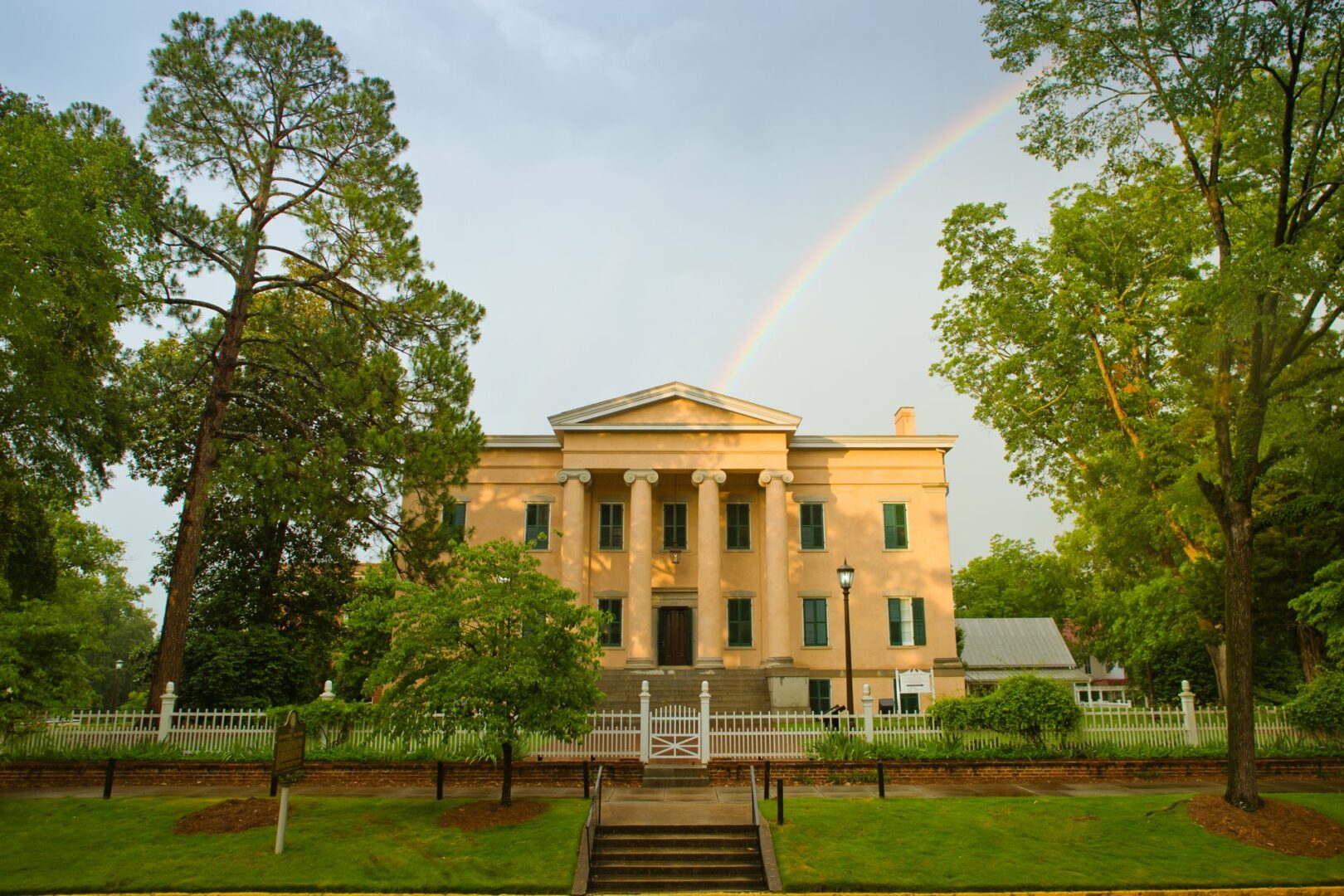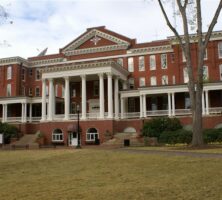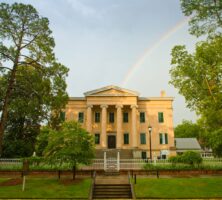Georgia College and State University, Georgia’s public liberal arts university, in Milledgeville was created by an act of the legislature on November 8, 1889. Georgia Normal and Industrial College, the institution’s original name, was founded to provide a practical higher education for women that would enable them to enter business and industry or teaching.
The principal catalyst behind this “New South” educational experiment was a young journalist at the Augusta Chronicle named Julia Flisch. Flisch argued that the same “feast of knowledge” afforded to men by the University of Georgia (UGA) and the newly created Georgia Institute of Technology should also be provided to women. Arguing that modern southern women needed to reject their “moonlight and magnolia” traditions, Flisch lobbied a network of influential women to advance the cause. One of those women, Susan Atkinson, encouraged her husband, state representative William Y. Atkinson of Coweta County, to introduce a bill establishing an industrial college for women. With Atkinson’s strenuous advocacy the bill passed, and effective lobbying by Baldwin County legislators ensured that the new college would be located in Milledgeville, Georgia’s former capital.
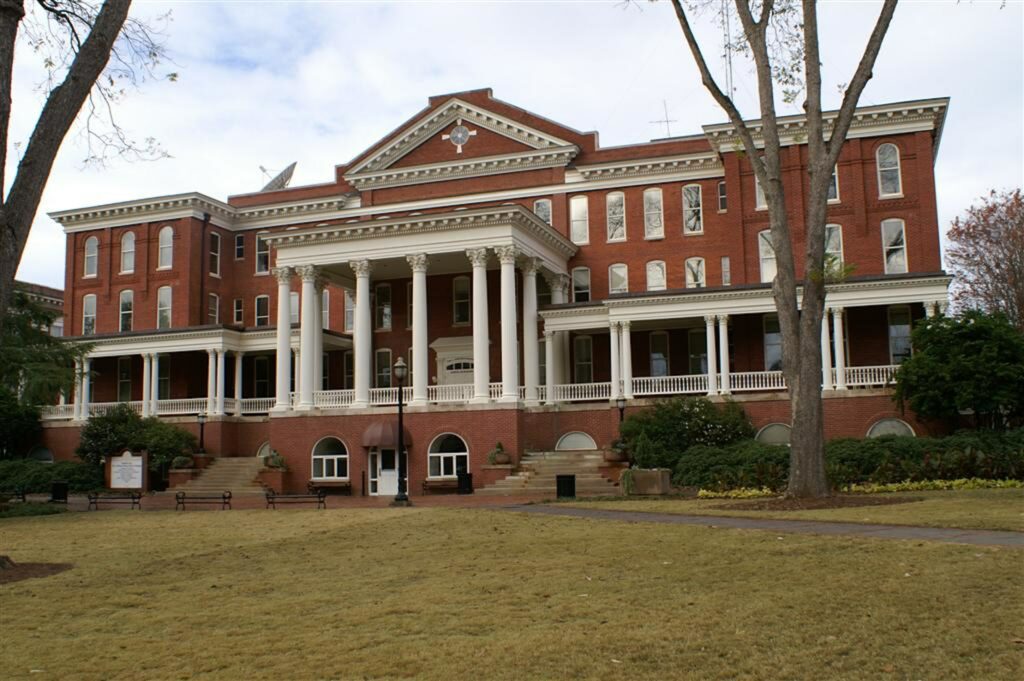
Image from C Smith
Georgia Normal and Industrial College was given the Old Governor’s Mansion as a dormitory and presidential residence as well as a sixteen-acre square filled with rubble from the former Georgia State Penitentiary. In 1891 Old Main, the college’s first classroom building, was completed. The first president, J. Harris Chappell, together with Julia Flisch, who was now a faculty member, shaped the philosophy and curriculum of the new college. Chappell wanted an egalitarian institution where, as he put it, “a millionaire’s daughter…could not be distinguished from the poorest girl in the school.” The girls all wore the same brown uniforms and, through a set of complex rules and regulations, were isolated as much as possible from local males. The college had something of the air of a convent. Chappell and Flisch also moved beyond the industrial college mission to develop a strong curriculum in the arts and humanities.
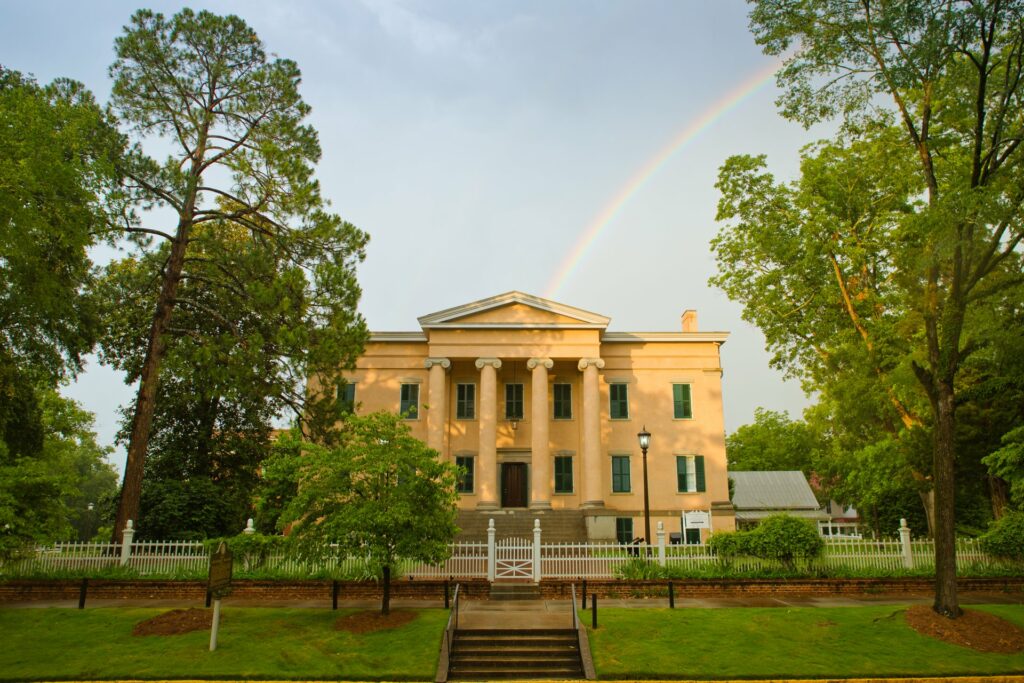
Courtesy of Explore Georgia.
In 1905 Chappell was succeeded as president by the energetic and charismatic Marvin M. Parks. The Neoclassical appearance of the campus took shape during Parks’s twenty-one-year tenure, and Georgia Normal and Industrial College moved beyond its tentative experimental years to become one of the leading normal schools in the Southeast. Parks assembled a faculty that taught such innovative courses as educational psychology, though he had a more traditional view of women’s socioeconomic role than did Chappell and Flisch. In 1917 Parks sought to gain a share of federal Smith-Lever funds for home economics extension work, and at the same time he lobbied the state legislature for permission to confer four-year degrees. Both actions generated opposition from the board of trustees of UGA. The UGA trustees argued, correctly, that the act that established Georgia Normal and Industrial College gave UGA final control and management of the women’s college. Parks had no intention of operating Georgia Normal and Industrial College as a mere branch of UGA. Cultivating powerful political allies, Parks wrested administrative control of the college from UGA, and in 1922 the two-year teachers’ college became a four-year degree-granting institution with a new name—Georgia State College for Women (GSCW). In 1926 Parks was struck and killed by a car in Tampa, Florida, but the college continued to flourish under a caretaker successor, a chemistry professor named J. Luther Beeson (1927-34).
On January 1, 1932, GSCW became part of the University System of Georgia, and two years later Guy H. Wells, a stout, nervously energetic, rather rustic native of Carroll County, assumed the presidency. Whatever his cultural deficiencies, Wells was a gifted administrator, and despite depression-era shoestring budgets, the college flourished under his guidance, with enrollment peaking at 1,500 in 1938. Wells encouraged student participation in governance decisions and, together with Dean Ethel Adams, created enduring traditions at GSCW. The most cherished of these was the Golden Slipper, a competition between classes to produce the best skits and dances, which soon came to symbolize the sisterhood of the Jessies (the name for GSCW students).
The campus was transformed during World War II (1941-45) when, through the efforts of Congressman Carl Vinson, a Milledgeville resident, the college became a training center for the Navy WAVES. From 1943 to 1945, 15,000 WAVES passed through GSCW. The regular students felt a bit crowded, and their occasional resentment was expressed in cartoons drawn for the college newspaper and yearbook by Flannery O’Connor. O’Connor, who graduated from GSCW in 1945, went on to become a major American writer and remains the college’s most distinguished graduate.
Enrollment declined precipitously in the postwar years, reaching a low of 585 students in 1953. Many young women considered the very concept of a woman’s college confining and rather old-fashioned. The decline was stabilized by two young presidents, Henry King Stanford (1953-56) and Robert E. Lee (1956-67). Lee came to embrace the embattled cause of female education, a crusade resulting in 1961 in the college’s third name change, to the Woman’s College of Georgia. Still, many of the college facilities were underused, and Lee, under pressure from the Board of Regents, began preparing the college for coeducation. The first males were admitted in 1967, the institution was renamed Georgia College, and enrollment grew over time from 1,107 in 1966 to 4,500 in 1989. The tightly knit community of students began to dissolve. Georgia College had become a senior comprehensive college serving the needs of central Georgia, and three-fourths of the students were commuters. In 1977, under the leadership of J. Whitney Bunting (1967-81), the college was divided into schools: arts and sciences, education, and business; the School of Nursing was added in 1987. Enrollment in the School of Business mushroomed during the Bunting years, and the college established off-campus centers at Robins Air Force Base and in Macon, Dublin, and Forsyth.
During the presidency of Bunting’s successor, Edwin G. Speir (1981-96), Georgia College began positioning itself for regional university status. Then, in 1995, the college’s mission changed abruptly. The new chancellor of the university system, Stephen R. Portch, impressed with the college’s high admission standards and its handsome red-brick buildings and white Corinthian columns, suggested that the college might become the public liberal arts college of Georgia, a state institution that would provide the kind of educational experience normally available only at private colleges. Speir readily embraced the new mission in 1996. In that year of dramatic change Georgia College, which had served as a regional college for thirty years, now began recruiting students from all over the state—by 2003, 75 percent of students came from outside central Georgia—and began recovering its liberal arts heritage. In addition, because of a new statewide Board of Regents policy, the college adopted its sixth name, Georgia College and State University. This radical shift in direction was presided over first by Speir and his successor, acting president Ralph W. Hemphill (1997) and then by the institution’s first female president, Rosemary DePaolo.
Beginning with her arrival in August 1997, DePaolo, whose energy and drive was comparable to that of Parks, worked to effect an intellectual and demographic transformation at Georgia College and State University. By 2002 she presided over a university with approximately 5,500 students, 700 faculty and staff, and a budget of $60 million. From 2001 to 2003, sixty-eight new faculty members were hired, the library building was tripled in size, eight new residence halls were under construction, and the university was accepted into membership in the Council of Public Liberal Arts Colleges. The graduate program, which numbers more than 1,050 students, includes a master’s degree in music therapy and a Master of Fine Arts in creative writing. DePaolo resigned in 2003, and interim president David G. Brown took over July 1, 2003. President Dorothy Leland began her position on January 1, 2004.


